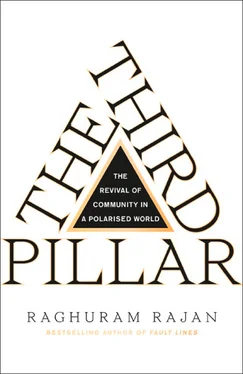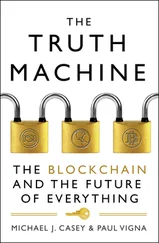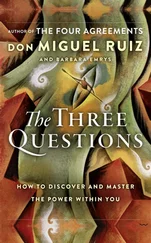With no alternative methods of transport, the angry oil drillers along Oil Creek decided to boycott the cartel and sell only to local independent refiners. Protesters attacked the railroads, emptied oil cars and spilled their contents on the ground, and ripped up tracks. Even as the industry was in turmoil, though, Rockefeller bought up twenty-two of his twenty-six Cleveland competitors. As an owner recounted, ‘There was a pressure brought … that if we did not sell out we should be crushed out … It was said they had a contract with the railroads by which they could run us into the ground if they pleased.’ 14
In the face of prolonged public protests, legislators eventually withdrew the charter for the shell company at the center of Rockefeller’s cartel, while Congress started investigations. The railroads, who were much more dependent on government favour and public opinion for their activities, backed down, and instituted uniform rates for all shippers once again. In the meantime, Rockefeller had created a refining monopoly in Cleveland, as well as a strategy that would serve him well going forward – cost efficiency was good, but monopoly on top of it was even better. Five years after what became known as the Cleveland Massacre, Rockefeller’s company, Standard Oil, controlled 90 per cent of oil refined in the United States. There were about a hundred struggling small independent refiners still in existence at that time in the United States, which allowed Rockefeller to maintain the pretense of competition in the refining industry.
In Rockefeller’s mind, he had only helped his inefficient competitors end their misery by taking them over – in many cases, he closed their plants. 15The surviving refiners would enjoy greater economies of scale and more stable prices, their workers would be more secure in their jobs, and customers would benefit in the long run. This argument for cooperation among producers – coordinated by Rockefeller – instead of competition, while not entirely implausible, was entirely self-serving. Competition was the only guarantee in a free market that a producer would be solicitous to customers, whether through innovation, better customer service, or low prices. Faced with a refiner monopoly, customers were dependent on Rockefeller’s benevolence. How much could it be trusted?
Rockefeller was a superbly efficient businessman in the Calvinist mode; he saw his work as his calling. His confidence in his own capabilities blinded him to alternative paths. He saw unfettered competition as greed, causing unnecessary booms and busts, and impoverishing the entire industry. What he tried to restore were cooperative structures such as trusts, pools, and monopolies that brought order to markets – and he had no hesitation in bribing entire legislatures or misleading public hearings with fake testimonials to get his way. 16Manipulating government was just another means to business success. Many successful businessmen of the time thought similarly – Rockefeller was just more successful at executing plans. Many at the receiving end saw the kind of order he brought, which was spreading to a number of industries in the United States such as railroads and steel, as monopoly capitalism, perhaps the worst form of calculated greed. For essentially, the capitalists at the center of these cartels insisted that they, not the free market, knew what was best for the public.
The free market was not perfect. Bouts of euphoria, fuelled by easy money, undoubtedly led to overexpansion and industry hangovers. However, eliminating these wasteful and volatile episodes would also eliminate the innovation, dynamism, and creative destruction of the free market. What the cartels called waste was in fact the constant experimentation fostered by the market, energized by competition. In a sense, the magnates of the late-nineteenth-century Gilded Age in the United States wanted to restore the aristocracy, where they decided what was best for the public, but without the explicit responsibilities of the feudal manor.
In many ways, Rockefeller’s personal life was exemplary. He lived in the Gilded Age but was not of it. In the latter part of his life, he did take public responsibility seriously, figuring out how to spend his enormous fortune on the well-being of society. Among the extraordinarily successful institutions he founded are the University of Chicago, where I teach. His dismal view of competition had less resonance with Adam Smith, though, than with another insightful economist, Karl Marx.
THE MARXIST RESPONSE
The Industrial Revolution that started in Britain in the late eighteenth century created tremendous new possibilities as well as widespread despair. I have already referred to workers displaced by new machines like the power loom. In addition, though, the promise of new technologies, as well as new lands, especially in the Americas, made accessible by railways and the steamship, prompted waves of euphoria fuelled by finance. The business cycle, with its production booms and busts, emerged in many industrialising countries, as did the financial cycle, with sustained booms in lending and euphoric rises in land and stock prices, followed by crashes. In the United States, there were serious financial panics about once every twenty years between 1819 and the start of the Great Depression in 1929. Among these were the Long Depression, a series of global downturns between 1873 and 1896, bookended by financial crises. The seventy years or so of relative financial calm between the bank failures of the Great Depression and the Global Financial Crisis in 2007–2008 were an aberration, not the norm.
Barring a few at the top of the societal pyramid, people in preindustrial times had experienced collective poverty. While industrialisation, transmitted through the competitive market, lifted average living standards steadily over generations, what was also new was great dispersion in incomes across society at any particular point in time, and great volatility over time. The market offered bountiful rewards and merciless punishment, which was both its greatest economic strength and its greatest political weakness. Economic security, not physical security, was now the primary public concern in industrialising countries.
Karl Marx was wrong in some ways, especially in his economic theories, but he was one of the greatest social thinkers of modern times. He recognised that society adapts to, and is therefore shaped, by the underlying production technologies of the time. ‘The hand mill gives you society with the feudal lord; the steam mill society with the industrial capitalist,’ he wrote. 17Subsistence agriculture bred feudal arrangements, while industrialisation and machines facilitated capitalistic corporations run by the emerging bourgeoisie. The technology of production did not fully determine the nature of society, of course, but Marx was right in that it was influential.
Unlike Rockefeller, who wanted capital to be left alone to create its mon-opolies, or utopian socialists like Robert Owen who, touched by the plight of the worker, called for a responsible, sharing, capitalism, Marx and his long time coauthor, Frederick Engels, were convinced that capitalism itself was fundamentally flawed and would collapse because of its own contradictions. Moreover, instead of appealing to the social conscience of the elite, Marx wanted to eliminate them. He believed that it was both morally right and economically beneficial for property to be commonly owned. Marxists did not look for crumbs off the capitalist’s table, they wanted the whole table itself to belong to those they thought were its rightful owners, the community of workers.
In their view, the industrialist exploited the worker through his ownership of the fixed plant and equipment of the factory, its capital, which was also why capitalism contained the seeds of its eventual downfall. Marx believed labour was the source of all value, and the only reason the industrialist made a profit was because the industrialist’s ownership of the means of production gave him bargaining power over workers. Any worker could go off on her own and become self-employed, but without the machines she would be unproductive. The industrialist would pay her a better wage than the self-employment alternative, but less than the value she produced for him. The difference between the value she produced working for the industrialist and her wage was the surplus value accruing to the industrialist, the source of his profits.
Читать дальше












